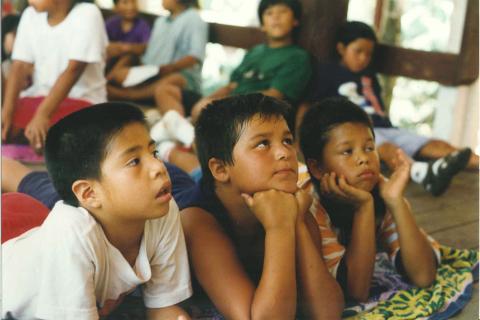The Choctaw creation story, as told by Isaac Pistonatubbee at the end of the 19th century and recorded “word for word in his native tongue” by Henry Halbert who published the story in volume 4 of the Publications of the Mississippi Historical Society, begins with a vivid depiction. According to Pistonatubbee, the narrative of these tribes' emergence from Nanih Waiya—a sacred site in Choctaw tradition—unfolded as follows:
“A very long time ago the first creation of men was in Nanih Waiya. And there they were made. And there they came forth. The Muscogees first came out of Nanih Waiya, and they then sunned themselves on Nanih Waiya’s earthen rampart. And when they got dry, they went to the east. On this side of the Tombigbee, there they rested. And as they were smoking tobacco, they dropped some fire.
The Cherokees next came out of Nanih Waiya. And they sunned themselves on the earthen rampart. And when they got dry, they went and followed the trail of the elder tribe. And at the place where the Muscogees had stopped and rested, and where they had smoked tobacco, there was fire and the woods were burnt. And the Cherokees could not find the Muscogees’ trail, so they got lost and turned aside and went towards the north. And there towards the north they settled and made a people.
And the Chickasaws third came out of Nanih Waiya. And then they sunned themselves on the earthen rampart. And when they got dry, they went and followed the Cherokees’ trail. And when they got to where the Cherokees had got lost, they turned aside and went on and followed the Cherokees’ trail. And when they got to where the Cherokees had settled and made a people, they settled and made a people close to the Cherokees.
And the Choctaws fourth and last came out of Nanih Waiya. And they then sunned themselves on the earthen rampart and when they got dry, they did not go anywhere but settled down in this very land and it is the Choctaws’ home.”
Unless they didn’t.
There is another story of Choctaw creation that begins not in Mississippi, but in the Pacific Northwest. Overpopulation had made food scarce, so two brothers, Chahta and Chikasa, led their people eastward. Each night they planted a sacred pole in the ground, and each morning it would be found leaning in the direction they were to travel. One morning, they woke to find the pole standing upright, a sign they had reached their home. On that spot, they buried the bones of their ancestors in a large mound and called in Nanih Waiya.

The sacred Nanih Waiya mound in Neshoba County, Mississippi, is a sacred site for the Choctaw, central to their creation stories and cultural heritage. Tom Mould
Both stories continue to be told today. Most Choctaw are not concerned with one being right and the other wrong, in the same way that most Christians aren’t bothered that the Bible offers two seemingly contradictory creation myths at the beginning of Genesis: one where God creates the universe, plants, and animals first, and then creates man on the sixth day, and another where He creates man first and then follows with the plants, rivers, and animals.
Myths—people’s most sacred stories—have always occupied an ambiguous space when it comes to literal, historical, figurative, and spiritual truths. Humans use myths to think with, to contemplate how the world works and how people should behave within it, whether those stories are codified as written scripture of the world’s major religions or shared as part of a dynamic oral tradition. For many indigenous people, myths serve as both explanation and blueprint for their rituals. Medicine men among the Navajo, for example, depict their myths in sandpaintings during healing ceremonies while singing and chanting the stories themselves as a way of restoring balance and healing the patient.
Tom Mould is a Professor of Anthropology and Folklore at Butler University and Fellow of the American Folklore Society. Mould authored Choctaw Tales (2004) and Choctaw Prophecy (2003), exploring the rich storytelling traditions of the Choctaw people. An expanded second edition of Choctaw Tales: Stories of the Firekeepers is coming in the summer of 2025 co-authored with former Chief Justice for the Choctaw Supreme Court Rae Nell Vaughn along with a new book—Choctaw Traditions: Stories of the Life and Customs of the Mississippi Choctaw—co-authored with the Director of the Department of Chahta Immi Jay Wesley and Choctaw tribal archivist Eddie Johnson.
Find out more about the role of storytelling in Native American culture. Read the full article in the September – October 2024 52nd issue Fairy Tales and Folklore from Around the World in Ancient Origins Magazine. Get it here!
Feature image: Choctaw youth during a summer language camp. Source: Tom Mould




